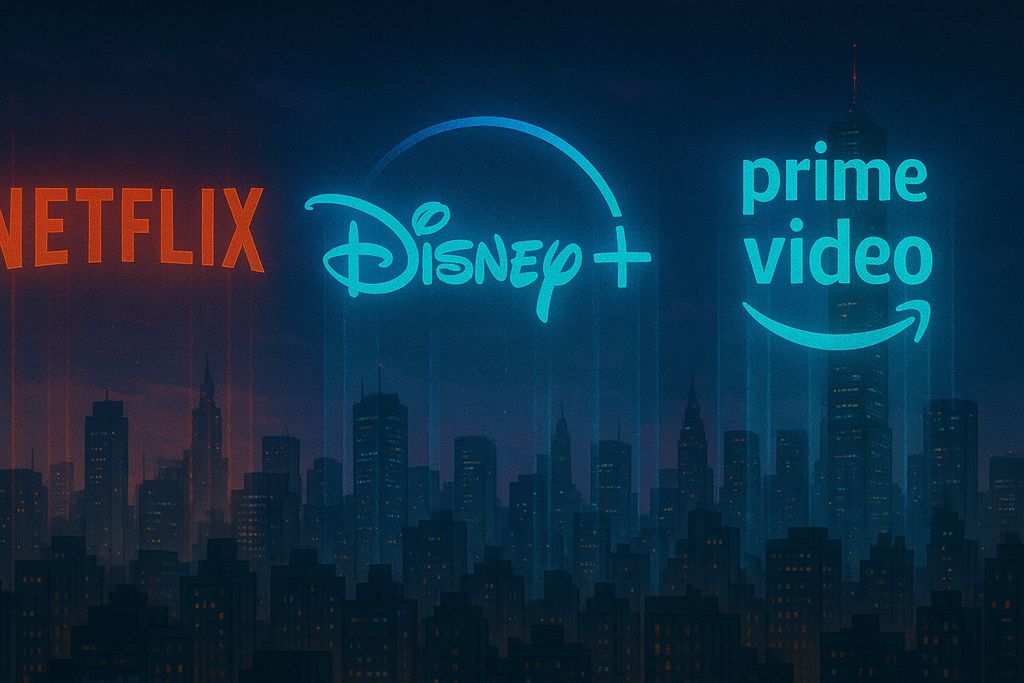How Streaming Titans Fight For Your Entertainment Buck
Aug 15, 2025 • 2 views

Your streaming subscription increased again. Three years ago, a good streaming system could've cost $30 a month. Now? Prices for both ad-free and ad-supported services have gone up on average over 20% since 2023. That growth indicates something much larger than inflation—it points to the fiercest competition in entertainment history. Just the same way smarter consumers analyze odds in advance of savvy bets on portals like 1xbet mobile QA, streaming viewers now have to the same extent face complicated mathematical considerations about what services offer optimal bang for entertainment bucks invested.
Investment Wars and Content Spending Battles
The financial battle field also witnesses astronomical figures that redefine whole entertainment economies. Netflix invested $15.3 billion in content and production in 2024 alone, which far exceeded all the other streaming platforms. In turn, Disney is estimated to increase content expenditure this year to $35.8 billion, rising some 27% from $28.3 billion in 2023, with much of the increase fueled by gaining full ownership of Hulu. Streaming platform content investment strategies illustrate how these enormous amounts of money radically change what consumers expect.
The competition spawns a number of distinct strategic positions:
Production of original content with exclusive franchises and actor deals
Purchases of live sporting events valued at billions of dollars annually
International expansion via local content creation and dubbing
Enhancement of technology infrastructure for enhanced streaming quality
Innovation in user experience such as personalization algorithms
Disney's combined streaming platforms — Disney+, Hulu, and ESPN+ — spent $8.6 billion on content, and Warner Bros. Discovery (Max and discovery+) spent $6.4 billion. These investments reflect different strategic priorities, with Disney leveraging its established IP library and Netflix spending money to create original programs.
The streaming environment today is like a complicated jigsaw puzzle in which customers have to make tactical choices as to which pieces suit their budgets and watching behaviors. Netflix boasted some 282.7 million paid subscribers globally through the third quarter of 2024, yet market share presents a different narrative. Consumer streaming subscription trends 2024 shows the way fragmentation impacts expenditure patterns across more than one platform.
Disney+ always dominated, powered by its unparalleled collection of Disney, Marvel, Pixar, and Star Wars franchises, maintaining an 11.7% market share in October 2024. Competition remains intense, though—YouTube reached 10.6% and Peacock reached 9.2%, which shows how diverse content strategies resonate with different audience segments.
Technological Innovation Drives Platform Differentiation
Platform competition extends beyond content libraries to technological superiority and user benefit. Netflix's recommendation system analyzes view data from tens of millions of users daily to create targeted recommendations. Disney+ leverages decades of content libraries to offer carefully curated collections that are challenging for others to replicate.
HD streams were the most used in 2024 with 55.7% share because of favorable bandwidth-to-quality trade-off, but platforms thinking ahead to future pressures invest considerably in infrastructure. 8K content is estimated to grow with an 18.3% CAGR on the back of codec innovations that cut bitrates by 40%, creating opportunities for platforms that can offer improved viewing experiences.
Ad-Supported Models Redefine Revenue Models
The growth in the subscription model is a reflection of changing consumer preference and economic pressures. The reality that about 55% of users opt for free streaming indicates there is high demand for cost-effective ways of entertainment. This compels premium products to reassess value proposition and price.
Disney+ and Hulu both have a Basic Bundle available for $10.00 a month with ads per streamer, while Netflix introduced its ad-supported tier in an attempt to retain price-conscious subscribers. The strategy is working—ad-supported tiers attract substantial subscriber numbers while providing another advertising revenue stream.
Market research indicates that hybrid monetization models become increasingly important to the viability of platforms. Combining services that feature subscription payments and advertising generate multiple revenue streams that lower dependence on subscriber rate increases only.
Pricing Strategy Evolution and Market Response
The price history of streaming indicates market maturity and companies attempting to become profitable. Apple TV+, whose price per month has doubled since its launch in 2019, illustrates how services modify pricing as libraries grow and production expenses rise.
Package strategies emerge as competitive distinctives providing consumer value while driving platform retention rates. Disney+ and Hulu provide a Basic Package for $10.00 a month with commercials for both streamers, creating package bundles discouraging subscriber churning to alternative services.
Global markets present particular challenges and opportunities for price optimization. Platforms must balance global cost of content against local purchasing power, leading to region-based pricing levels and content tiers.
